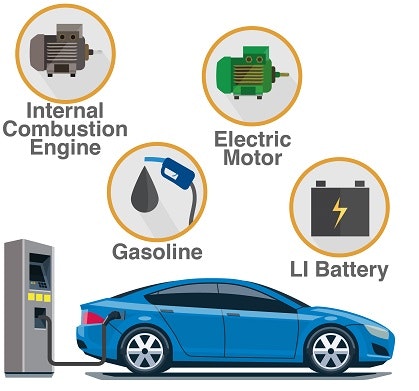
Understanding Flex Fuel Vehicles
Flex fuel vehicles, also known as FFVs, are automobiles that are designed to run on a blend of gasoline and alternative fuels, such as ethanol. These vehicles have engines that can operate with varying combinations of gasoline and ethanol, allowing drivers to choose the fuel type they prefer or that is most readily available.
Here’s a detailed explanation of how flex fuel vehicles work:
Fuel System:
Flex fuel vehicles have a modified fuel system that can accommodate different fuel blends. The fuel tank, fuel lines, and fuel injectors are made of materials that are resistant to corrosion caused by ethanol. Additionally, the fuel pump and the engine control system are specially calibrated to handle different fuel mixtures.
Ethanol Sensor:
To determine the ethanol content in the fuel, flex fuel vehicles are equipped with an ethanol sensor. This sensor measures the percentage of ethanol in the fuel blend and sends the information to the engine control unit (ECU). The ECU adjusts the engine’s parameters based on this data to optimize performance.
Fuel Mixture:
Flex fuel vehicles can run on various fuel mixtures, ranging from gasoline to ethanol blends like E85 (85% ethanol and 15% gasoline). The ECU analyzes the input from the ethanol sensor and adjusts the fuel injection, spark timing, and other parameters accordingly. The engine management system ensures that the air-fuel mixture is appropriate for the specific fuel blend being used, optimizing combustion efficiency.
Engine Modifications:
The engine in a flex fuel vehicle is designed with modifications to handle higher ethanol content. Ethanol has a higher-octane rating than gasoline, meaning it has better resistance to knocking or pre-ignition. Therefore, flex fuel engines often have higher compression ratios, modified cylinder heads, and stronger components to withstand the demands of ethanol combustion.
Cold Starting:
One challenge with ethanol is that it can be harder to start in cold weather conditions. To address this, flex fuel vehicles may have additional features like an electric fuel heater or an auxiliary gasoline fuel system. These systems help ensure easy starting and smooth operation in colder climates.
Fuel Economy and Performance:
The fuel economy of a flex fuel vehicle can vary depending on the fuel blend being used. Ethanol has a lower energy content compared to gasoline, so when running on E85, the vehicle’s fuel efficiency may be slightly reduced. However, when running on gasoline, the fuel economy will be similar to that of a conventional gasoline-powered vehicle.
In terms of performance, flex fuel vehicles generally deliver similar power and torque to their gasoline counterparts. However, ethanol has a higher-octane rating, which means it can support more aggressive engine tuning. Some flex fuel vehicles can take advantage of this by offering higher power output when running on ethanol blends.
Availability of Ethanol:
The availability of ethanol as a fuel can vary depending on the region. In some countries or states, ethanol may be readily available at dedicated fueling stations, while in others, the infrastructure may be limited. Flex fuel vehicles provide the flexibility to switch between gasoline and ethanol, allowing drivers to adapt to the local fuel availability.
Overall, flex fuel vehicles provide a versatile and environmentally friendly option for drivers, as they can utilize renewable fuel sources and reduce dependence on fossil fuels.
Click Here to check out our variety of Flex Fuel Vehicles at Diehl of Grove City!




